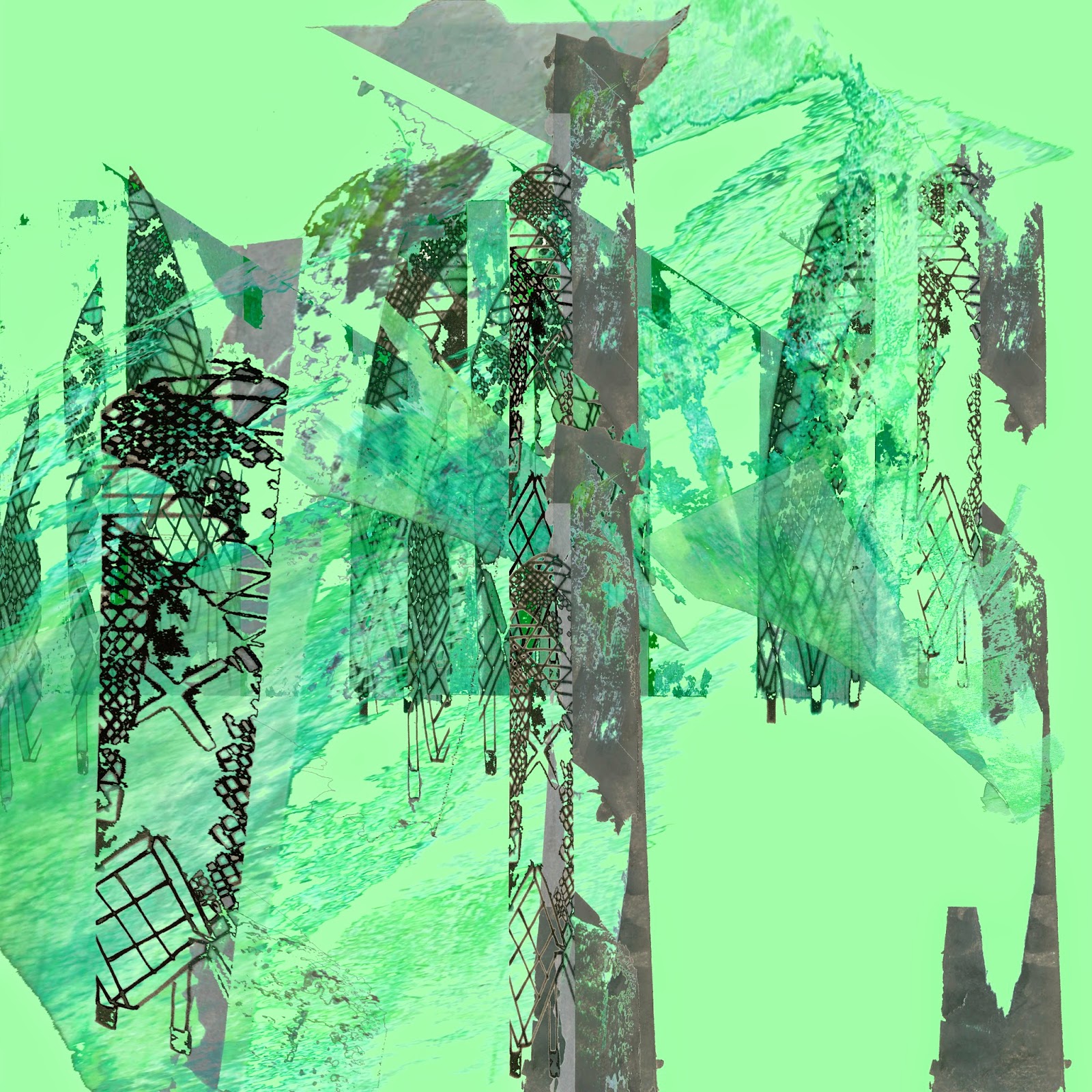Throughout the first two weeks of this project I have visited Manchester Museum to gather images from their Siberia Exhibition including full size animal and human skeletons. From these images I have concentrated on developing a series of drawings based around the concept of 'Anatomy'. They have a graphic, linear quality to them as well as abstract shapes so they could be translated effectively onto the Ethos Software and Multi-head as well as the possibility of laser cutting parts or engraving them. The colours I've used in my drawings are relatively subtle, although some are more brightly coloured, but within a colour palette that suits the idea of 'Anatomy' - reds and blues (like veins) and oranges and whites (like bones). I have manipulated some of the drawings in Photoshop to enhance the best bits of the selected drawings and merge elements together to create new drawings.
The edit above appears as though the hand is squeezing the heart and the lungs are being pushed out the side. It was a bit of a 'happy accident', but I like the mix of abstract smudges in the background with the graphic lines in front. I think if I was to use the same visual research for the 'Engineering Embroidery' brief I would have to make the shapes more abstract so they would be suitable for the high-end car interior market - my focus over Christmas. The colours would also have to be subtler or cover less fabric to be appropriate for the market.
I intend to develop the concept of 'Anatomy' into designs for the Multi-Head machine that become more abstract compositions so I could also use the ideas for the live brief 'Engineering Embroidery' as samples to fit in a high-end car interior. After discussions in my tutorial, I now intend to create more drawings using acetate so I can really explore the idea of human AND animal anatomy merged together (similar to the frog skeleton image above) - this will be my focus for the Christmas break.




















.jpg)
.jpg)
.jpg)

.jpg)

.jpg)




.jpg)








.JPG)

.JPG)

.JPG)






